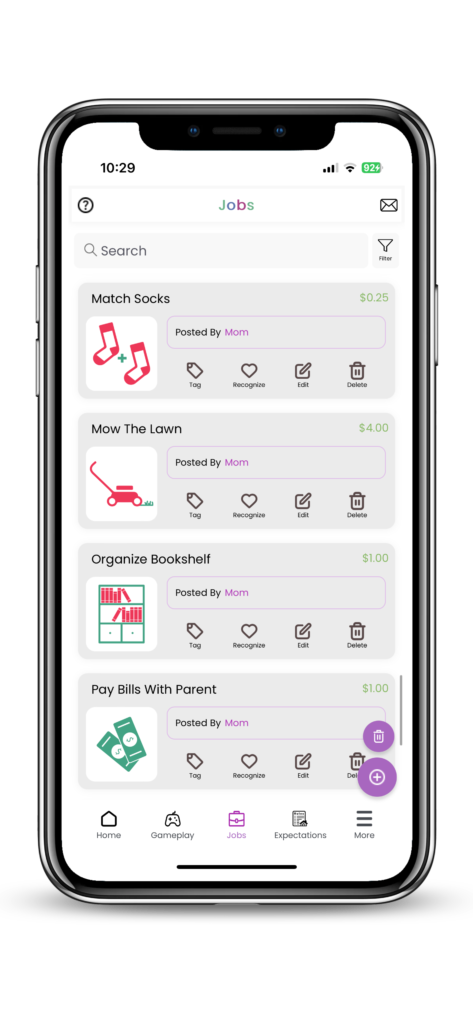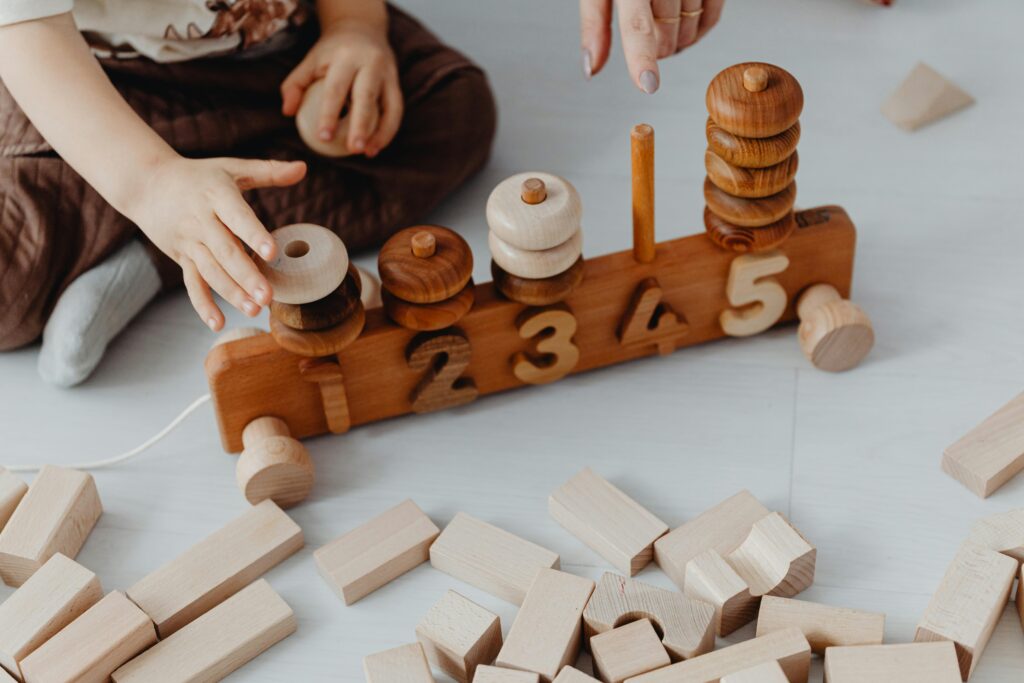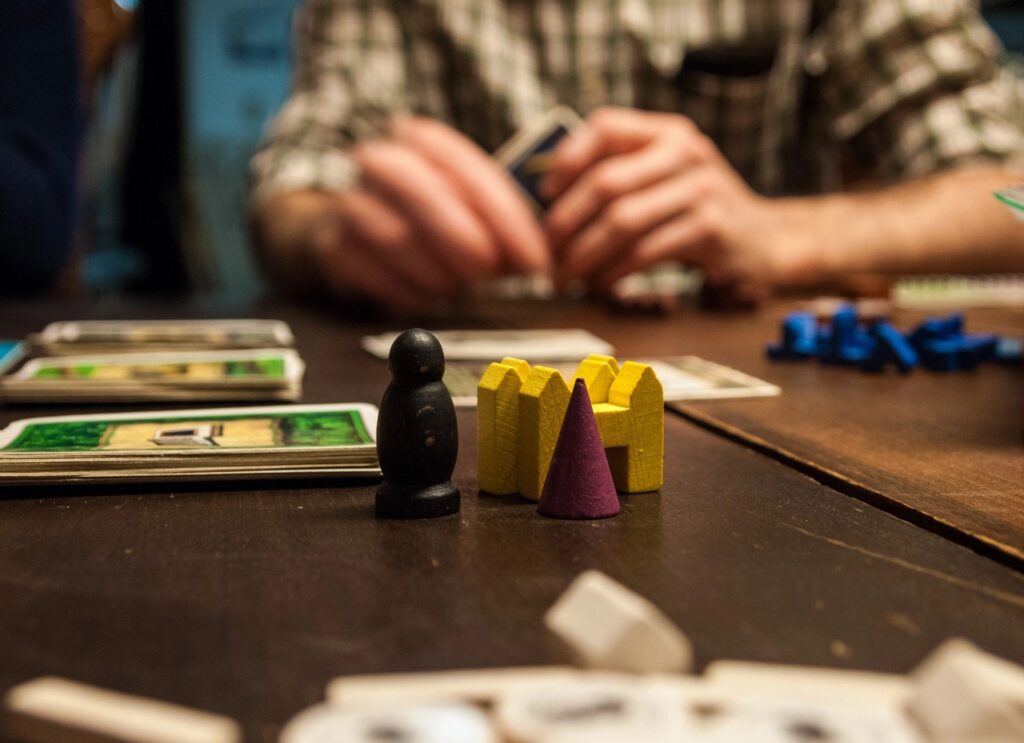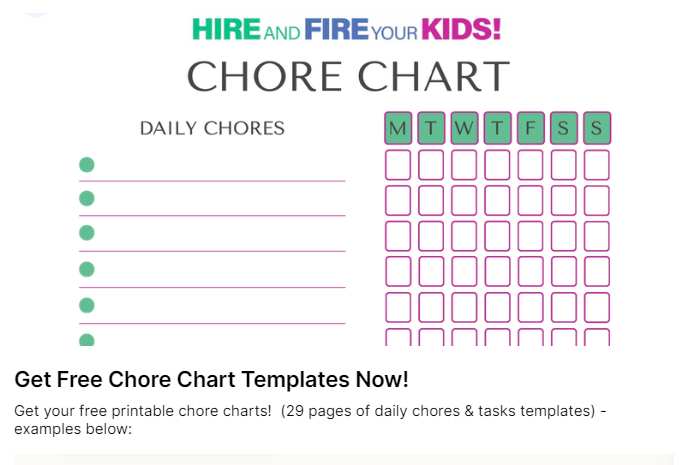Welcome to the do-it-yourself workshop of life skills, where little hands take on big tasks to craft the art of responsibility. Sounds impressive, right? But imagine, in a world where an adult-sized chore list just got miniaturized for your pint-sized apprentice. Now that’s an unexpected intersection of innovation and practical experience.
This is not about filling time with monotony; it’s about shaping future adults who appreciate hard work, organization, and initiative. The room of responsibility unlocks with 15 hand-selected chores, each designed for a 5-year-old’s abilities while sowing seeds of life skills. We don’t promise it to be easy, but it’s going to be worth it.
You remember the first time you rode a bike, right? It was probably wobbly, and falling wasn’t fun. But learning, that was the adventure. Let’s give that adventurous learning experience to our children through the lessons folded within everyday chores. One dish at a time, one folded shirt at a time, we’re laying down the stepping stones to competence and confidence. Welcome to the journey of unlocking responsibility.
Unveiling 15 Age-Appropriate Chores for 5 Year Olds
Introducing your 5-year-old to chores not only helps with household tasks but also plays a crucial role in their development. Through simple, age-appropriate chores for 5 year olds, children learn valuable life skills, build independence, and gain a sense of accomplishment. This guide outlines 15 practical chores that are both manageable and educational, setting the foundation for a lifetime of responsibility and self-reliance.
Chore 1: Making the Bed
Making the bed as a chore cultivates discipline and gratitude in young ones. Completing this task each morning allows the child to start the day on a productive note, fostering a sense of accomplishment early. Additionally, this personal duty teaches 5-year-olds to appreciate the comfort of having a clean, tidy space.
The Chore in Action
Having your child fluff the pillows, straighten the duvet and arrange any cuddly toys are safe, achievable tasks for a 5-year-old. Step-by-step guidance during initial attempts is encouraged.
Chore 2: Cleaning Up Toys
The “clean-up-after-play” routine is a practical way of teaching responsibility and the value of one’s belongings. Encouraging a 5 year-old to care for their playthings as part of the play process ensures they understand the consequence of their actions
“Play is the highest form of research.” Role-playing allows children to act out real-life situations in a safe and controlled environment, making it an ideal way to teach them responsibility. They learn to empathize with others, make decisions, and understand the consequences of their actions.
Dr. Jean Piaget, Famous psychologist
Chore Strategy
Structured play/clean up schedules and labeled storage bins can be supportive tools here. One can combine cleaning up with a small reward or maintain a progress chart for added motivation.
Chore 3: Watering Plants
For a 5-year-old, watering plants goes beyond enjoying the magic of nature — they learn about responsibility, life cycle, and the seasons. It’s an ideal way of fostering environmental awareness in young minds while reinforcing the positive effects of routine care.
Chore Implementation
Start with one or two potted plants, using a lightweight watering can suitable for their size. Teach children about the importance of the right amount of water.
And so on for the remaining chores. Any chore from this list can become a practical lesson integrating essential life skills. Every minor duty assigned should aim at developing a sense of responsibility and self-reliance in children, guiding them towards becoming competent future adults. But remember, chores should be introduced in line with the child’s evolving capabilities, and parallel run with playful learning.
Chore 4: Setting the Table
Setting the table for family meals is a simple chore that teaches 5-year-olds about routine and preparation. It also helps them understand the importance of contributing to family activities and creates an opportunity for them to take pride in a job well done.
Chore in Practice
Guide your child on where to place the utensils, plates, and cups. Make it fun by turning it into a game, like matching the correct number of items to the number of family members.
Chore 5: Sorting Laundry
Sorting laundry by color or type is a great way for children to develop organizational skills and learn about responsibility. It also helps them differentiate colors and textures, turning a routine chore into a learning experience.
Chore Methodology
Provide small laundry baskets and show your child how to separate clothes into categories (e.g., whites, colors, socks). Make it more engaging by asking them to match socks or count items as they sort.
Chore 6: Feeding Pets
Taking on the responsibility of feeding a pet teaches children about caring for others and the importance of regular routines. It also reinforces empathy and the understanding that living beings depend on them.
Chore Steps
Ensure that the pet’s food is easily accessible and demonstrate the correct portion size. Supervise the child during the first few times to ensure they understand the task.
Chore 7: Dusting Low Surfaces
Dusting low surfaces, such as coffee tables or bookshelves, helps children develop fine motor skills and an eye for detail. It also encourages them to take part in maintaining a clean living environment.
Chore Tips
Provide a soft, child-friendly dusting cloth and show them how to wipe surfaces gently. Turn on some music and make it a fun activity by dusting together.
Chore 8: Putting Away Groceries
Helping to put away groceries teaches children about categorization and the organization of household items. It also allows them to feel involved in family activities, fostering a sense of teamwork.
Chore Participation
Assign your child light items, like boxed goods or fruits, to put away. Guide them to the correct location in the pantry or refrigerator, making it a hands-on learning experience.
Chore 9: Helping with Recycling
Sorting recyclable materials like paper, plastic, and glass introduces children to the concept of environmental responsibility. It also helps them understand the importance of taking care of the planet.
Chore Guidelines
Provide separate bins for each type of recyclable material and teach your child to identify and sort them accordingly. Encourage them by explaining how their efforts contribute to protecting the environment.
Chore 10: Picking Up After Meals
Clearing their own plates after meals is a simple yet effective way to teach children responsibility and good manners. It also helps them understand that taking care of one’s space is important.
Chore Action
After meals, encourage your child to carry their plate to the sink or dishwasher. Gradually, they can learn to scrape leftovers into the trash or compost bin as well.
Chore 11: Wiping Up Spills
Cleaning up spills themselves teaches children responsibility for their actions and helps them develop a proactive approach to problem-solving. It’s also a step toward independence in managing their environment.
Chore Guidance
Keep child-safe cleaning cloths or wipes accessible, and show your child how to gently wipe up spills. Emphasize the importance of cleaning up right away to prevent accidents.
Chore 12: Organizing Shoes
Organizing shoes in a designated spot helps children develop organizational skills and responsibility for their belongings. It also contributes to a tidier home environment.
Chore Setup
Provide a shoe rack or designated area by the door and teach your child to place their shoes there neatly after coming inside. Make it a habit by incorporating it into their daily routine.
Chore 13: Collecting Trash
Taking small trash bags from bathrooms or bedrooms to the main bin teaches children about household maintenance and cleanliness. It also gives them a sense of responsibility in keeping their environment tidy.
Chore Procedure
Provide child-sized trash bags and show them how to tie them up before taking them to the main trash bin. Supervise initially to ensure safety, especially with heavier bags.
Chore 14: Helping with Gardening
Gardening chores like planting seeds or pulling small weeds introduce children to the basics of plant care and responsibility for living things. It also provides a hands-on learning experience in biology and environmental science.
Chore Participation
Start with simple tasks like digging small holes for seeds or pulling weeds. Explain the purpose of each task, making it an educational experience.
Chore 15: Preparing Snacks
Helping to prepare simple snacks like spreading peanut butter on toast or arranging fruits on a plate encourages independence and develops fine motor skills. It also introduces basic culinary skills.
Chore Steps
Guide your child in choosing healthy snack options and show them how to safely use child-friendly kitchen tools. Supervise to ensure safety, gradually giving them more responsibility as they become comfortable.
Each chore on this list can serve as a practical lesson, integrating essential life skills that promote a sense of responsibility and self-reliance in children. As 5-year-olds grow and develop, chores should evolve alongside their capabilities, always ensuring that learning remains engaging and enjoyable. Remember, the key to success is consistency, encouragement, and making chores a positive experience that fosters growth.
How to Implement These Chores in Your Child’s Routine
Step 1: Start with Simple Tasks
Not every task has to be complex or time-consuming. In fact, starting off with simple tasks like making their bed, tidying up their toys, or feeding a pet can slowly introduce responsibility to your child. The key here is to manage expectation; remember that we’re dealing with 5-year olds, and their capacity for complex tasks is limited.
The point here is not to overwhelm your child but to make them understand the correlation between their actions and their surroundings. By associating these tasks with their daily routine, you’re helping them develop a sense of responsibility and accountability.
Step 2: Make Chores Fun
There’s a reason why preschools are bright, colorful, and filled with playful designs.
Simply put, children are more inclined to engage in activities that are visually stimulating and fun. The same goes for chores.
With a splash of creativity, chores can turn from unexciting tasks, to appealing activities. For instance, you can make a game of tidying toys where the one who collects the most toys in the shortest time wins.
Through this approach, your child will not only learn responsibility but also look forward to performing these tasks.
Step 3: Be Consistent and Patient
Implementing a chore routine for a 5-year-old will require both consistency and patience from you as a parent. Demonstrate consistency by establishing a routine that incorporates the chores. Using apps can help manage this day to day like Hire and Fire your Kids. Be sure to remain patient when they falter or resist – it’s all part of the learning process.
Being patient and consistently calm while your child learns, makes mistakes, and eventually achieves success, teaches them, besides the chore itself, coping mechanisms and resilience.
Step 4: Provide Positive Reinforcement
Continuous positive reinforcement plays a massive role in instilling new habits, especially in children. When your child successfully completes a chore, a little praise or token of appreciation can go a long way.
This act establishes a positive loop, where the child associates performing tasks with receiving praise, helping in-progress consistency and habit formation.
When providing positive reinforcement, remember to be specific. This way, the child knows what they did right and what actions led to the praise. It gives them a clear understanding of what is expected and encourages them to repeat the behavior.
How to Manage Chores with Hire and Fire your Kids: A Step-by-Step Guide
Managing chores is seamless with the Hire and Fire Your Kids app, where teens can learn through play. Here’s how to get started:
- Download and Set Up the App: Download the app and create profiles for each child.
- Assign Chores: Use the app to assign age-appropriate chores and set deadlines. Or, your kids can “apply for jobs” and assign themselves.
- Track Progress: Monitor their progress through the app and provide feedback. Give out warnings or recognition as needed.
- Incentivize with Rewards: Set up and customize a reward system that motivates your child to complete chores on time. Use KidsKash to pay them out for the money they earn with their chores.
- Review and Adjust: Regularly review chore assignments and adjust based on your child’s growth and performance.

Unraveling the Benefits of Chores for Kids
Development of Responsibility and Independence
Instilling responsibility in children is no small matter. It equips them with a strong sense of duty that is instrumental in their growth. Besides this, it fosters independence, which is a key skill needed to navigate life’s challenges. Chores, albeit simple, have the profound effect of instilling these essential life skills. For instance, pushing a mop or setting the dinner table might seem trivial, but with time, these tasks play a significant role in molding children into responsible individuals. As they uncover the fulfilling feeling of completing tasks and contributing to the family, children’s sense of responsibility and family bonding blossoms. Not only do these responsibilities build their confidence, but they also learn to approach life with a can-do attitude.
Improvement in Motor Skills
Motor skills are another area where chores present immense benefit. The array of chores from folding laundry, washing dishes, to sweeping floors are all opportunities for children to refine their gross and fine motor skills. The physicality of these tasks demands meticulous hand-eye coordination. As children repeatedly engage in these tasks, they inadvertently improve their motor skills. However, it doesn’t end there. The impact of this extends to improving their academic life as
Enhancement of Time Management Skills
Chores can also be an effective tool to instill a sense of time management in children. The completion of tasks within a set period prompts children to manage their time effectively. It challenges them to balance fun and work, as one cannot take precedence over the other. Using a simple timer does wonders!
Boost in Self-Esteem and Confidence
Finally, chores can significantly boost children’s self-esteem and confidence. Achieving something – even if it is a humble chore – gives children a sense of accomplishment. As they recognize their ability to contribute meaningfully to the household, they feel more capable, confident and self-reliant. The sense of pride they derive further reinforces their self-esteem, positioning them for success in their future endeavors.

Understanding the Concept of Teaching Responsibility through Chores
The Role of Chores in Character Building
Assigning chores to a 5-year-old can play an integral role in developing their personality and building character. Chores aren’t just about getting help around the house – they serve as practical lessons in responsibility, work ethic, and the value of contributing to a common cause.
Chores provide tangible opportunities for children to experience the sense of accomplishment that comes with completing a task. This fuels self-confidence and demonstrates the link between effort and reward – a cornerstone of work ethic. Moreover, participating in household duties fosters a sense of belonging and contribution, embedding the value of teamwork.
The Importance of Age-Appropriate Chores
Key to the process of assigning chores is acknowledging the abilities and limitations of a 5-year-old. Overly complex duties may lead to frustration and resistance, while overly simple ones can prove unchallenging and meaningless. Age-appropriate chores serve as achievable milestones that encourage the child’s cognitive and physical development.
This article cuts through the mental fog, guiding you on the journey of doling out age-appropriate tasks for different age groups. We’re not talking guesswork or baseless theories here:
When assigned chores that align with their developmental level, children engage positively, and the chores begin to serve their intended purpose: fostering skills and confidence. They learn to take pride in their tasks and gradually imbibe a sense of responsibility.
The Balance between Chores and Play
While it’s important to teach responsibility through chores, remember that children learn a lot through play as well. A 5-year-old’s primary job is to explore, imagine, and engage with the world around them — mostly through play. Balance is key!
There should be space for paint-splattered art sessions, dance-offs, and afternoons spent building mega towers with blocks. These free play moments are equally crucial for a child’s social, cognitive, and creative development. Therefore, scheduling chores should never edge out playtime. When implemented rightly, chores can complement play, adding further levels to the child’s understanding of self and the world.
Effective chores for children bear the hallmarks of potential life lessons. When carefully selected and balanced with play, they provide children with valuable skills they carry with them well into adulthood. While the consequences of not completing a chore might seem insignificant today, you’re building the foundation of responsibility and character one Lego pickup at a time.
Exploring Creative Chores for 5 Year Olds
Chore Games: Making Chores Fun
Children naturally love playing games. One of the most effective ways to engage a 5-year-old in chores is by transforming the tasks into games. Not only does this help to make doing chores fun, it also transforms chores into an exciting learning experience. Chore games can be as simple as a race to clean up toys the fastest or as elaborate as a treasure hunt for dirty laundry. The key to a successful chore game is to ensure it’s age-appropriate, enjoyable, and has a clear objective tied to the task at hand.
Engaging Chore Routines
Creating games around chores also fosters routine in a child’s life. Consistency and routine help children feel safe, provide a sense of “normal,” and can improve behavior. For instance, ‘tidy-up-time’ can signal the end of play, preparation for the next activity, or simply a time to come together as a family. Remember, making chores fun doesn’t mean removing the task aspect. The aim is to make the task more appealing for your child.
Chore Charts: Visualizing Tasks and Progress
Chore charts are an excellent tool to give children a visual representation of their tasks and progress. They help children feel accomplished as they move from one task to the next and check them off their list. Charts can be a simple written list, or they can include colors and pictures for younger kids to understand better. And just as chore games can be creative, so too can chore charts. For example, a tree-themed chore chart could see a leaf added every time your child completes a chore, eventually completing the tree.
Constructive Visual Learning
Chore charts promote visual learning and instill a sense of responsibility in children. By visualizing chores, children can understand the tasks they’re expected to complete without an adult’s constant reminders. It encourages them to take ownership of their own tasks and learn to manage their time productively.
Chore Rewards: Motivating Kids to Complete Tasks
Rewarding children for completed chores is another technique to foster task completion. Instead of monetary rewards, consider experiences, privileges, or additional playtime. Different children are motivated by different rewards, so it’s important to understand what your child values the most. Rewards should not result in a sense of entitlement, but rather, be seen as the result of hard work and responsibility.
Positive Reinforcement
A well-executed rewards system taps into the principle of positive reinforcement – the idea that behavior which is rewarded is likely to be repeated. By rewarding your child for completing their chores, you’re encouraging them to repeat this behavior in future, developing a habit of responsibility and task completion.
Remember, though, that the ultimate goal of assigning chores is not just to get tasks done, but to instill valuable life skills in your child. Regardless of the approach you choose – whether it’s making chores fun, using visual charts, or giving rewards – the key is to always keep the bigger picture in mind: raising a responsible, self-reliant individual who understands the value of work and commitment to tasks.
Instilling Life Skills through Chores
Chores as a Tool for Teaching Financial Responsibility
Chores are a fundamental gateway in children’s understanding of financial accountability. Assigning tangible rewards to various tasks or chores lets kids start to comprehend the concept of earning and develops their financial literacy. One in four parents use chores as a method to teach how earnings are proportional to work. Allow your child to earn points or tokens for completed chores, and then they can use these points to get their desired toys or go on a fun trip. The Hire and Fire your Kids chore app has the ability to assign, track, reward and do most of the work for you!
This process makes them realize that money isn’t freely available – it’s a result of hard work and effort. Essentially, they’ll understand that they have to labor for what they want, shaping financial responsibility from the onset.
Chores as a Means to Teach Problem-solving Skills
Tasks and obstacles inherent in chores can enable kids to develop problem-solving skills. For instance, a chore like arranging toys can be a lesson in planning and execution. They can struggle initially, but they will gradually learn to tackle the problem methodically.
When they face a chore-related problem, encourage them not to shy away, but to solve it with their understanding and resources. Doing so would help boost their competence and confidence in dealing with difficulties in the long run.
Chores as a Platform for Teaching Teamwork and Cooperation
Chores can play a pivotal role in teaching little ones the essence of teamwork and cooperation. Assigning chores that require shared efforts from siblings or parents and the child, like cleaning a room or packing away groceries, cultivates the spirit of cooperation, and they learn from a young age to work in unison for a common goal.
Engaging kids in such chores also develops communication skills and infuses in them the ability to coordinate their activities with others. This early exposure will stand in good stead in their social life and later in their professional journey.
Chores as a Way to Teach Respect for Personal and Shared Spaces
Chores which involve the responsibility of maintaining clean and tidy spaces can ingrain a deep respect for personal and shared spaces in children. Coupled with explanations on why it’s important, tasks such as making their beds or cleaning the dishes help children to develop awareness around maintaining their surroundings neat and clean, which can make them more respectful towards their own and also shared spaces. By promoting a healthy lifestyle now, future roommates and spouses will be thanking you!
Communicate the importance of cleanliness and being respectful of shared spaces as they perform such chores, instigating a lifelong habit.
Wrapping Up Chores with a Bow
Assigning age-appropriate chores can foster a sense of responsibility, develop motor skills, and instill a healthy work ethic in your five-year-old. It’s a simple shift, but it can make a world of difference in their formative years.
Incorporating these suggested 15 tasks into their daily routine will not just keep them occupied—it’s preparing them for a lifetime of self-reliance and problem-solving. Remember, the skills they learn today become the habits that stick tomorrow.
Now for your next move – start with just one chore. And when they’ve mastered that, add another. Keep going until you’ve built up a diverse chore roster that develops a wide range of skills and use tools like Hire and Fire your Kids to help you.
Curious to see how this strategy impacts your child’s growth?
Then pay attention to their daily proficiency. Will Samuel initiate tidying up his toys without being reminded? Does Susie enthusiastically help out with meal prep without your asking?
Don’t be surprised when you see these incremental victories. That’s the enduring power of chores—teaching our kids about responsibility, one task at a time.





